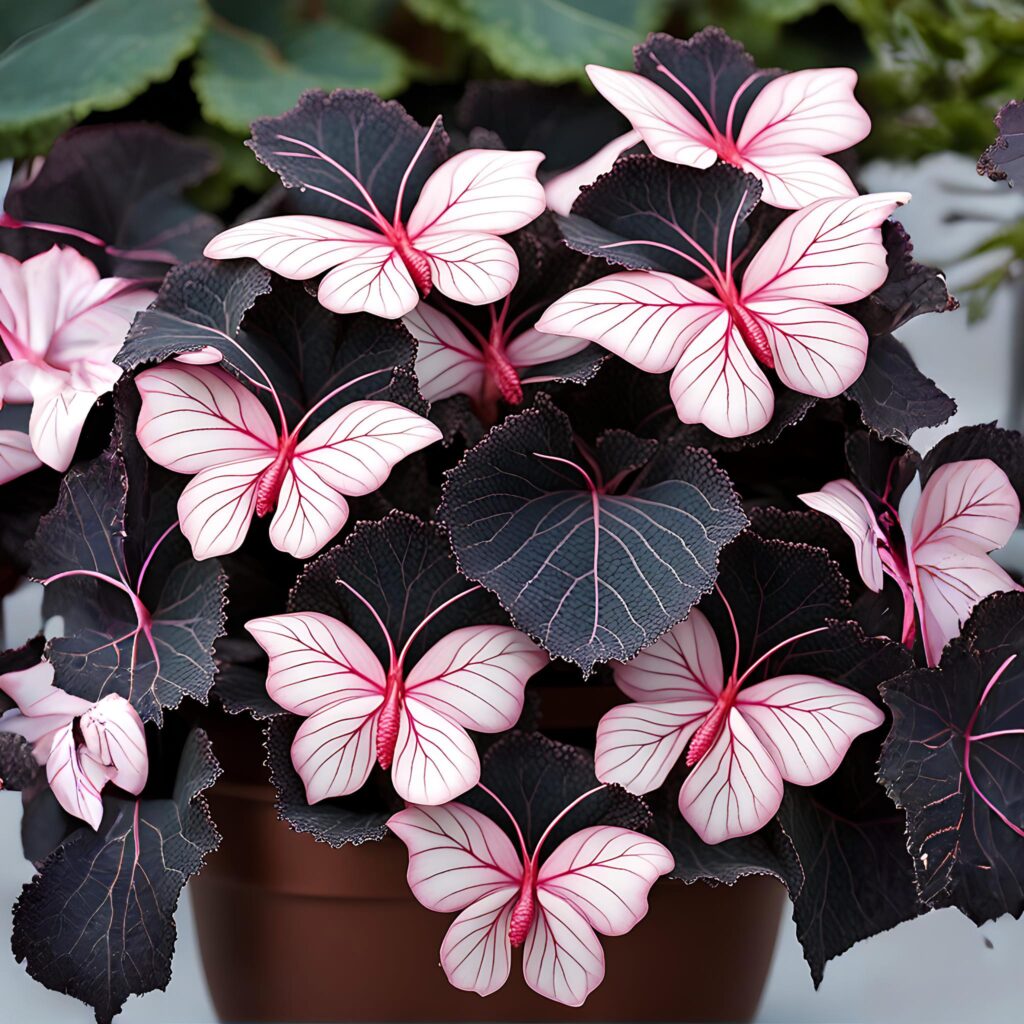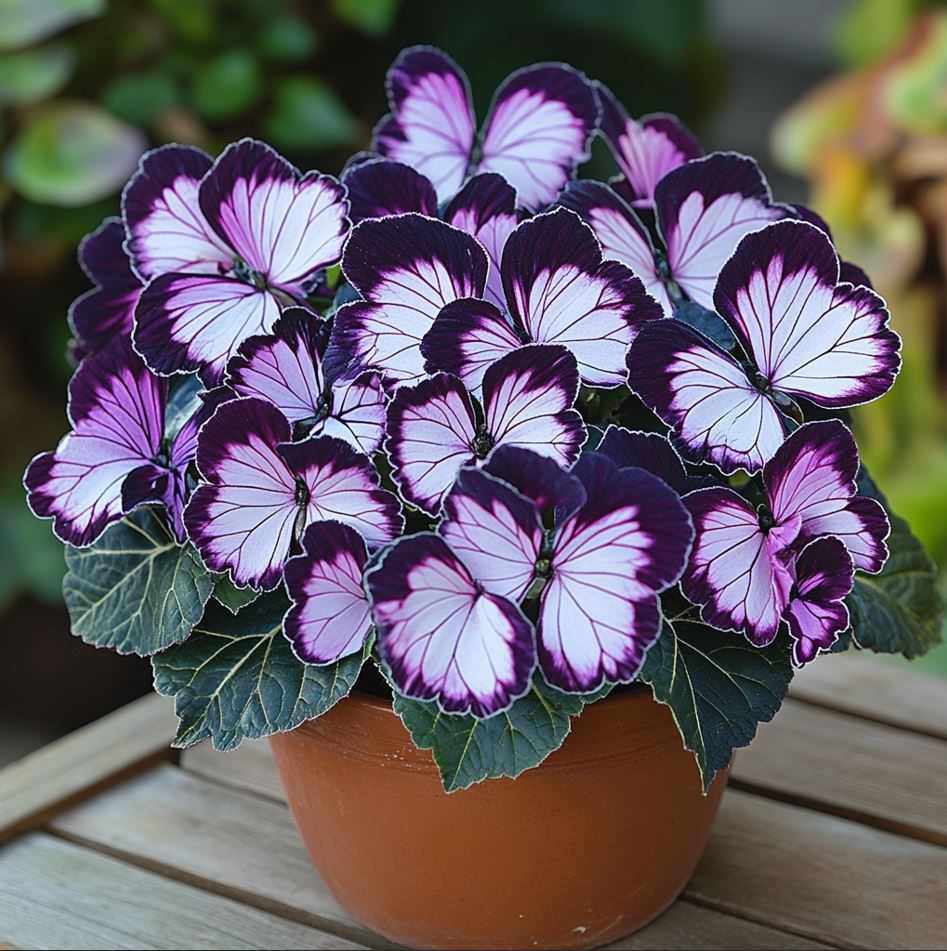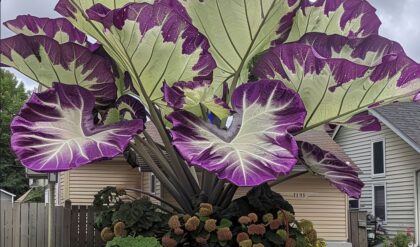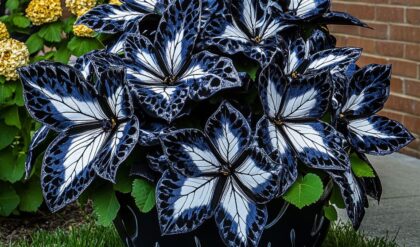The Begonia Moonlight Butterfly, with its shimmering silver leaves and delicate pink blossoms, is a mesmerizing sight that can instantly transform any indoor space. Its unique charm lies not only in its aesthetic appeal but also in its relatively low maintenance nature. However, to truly appreciate this botanical marvel, one needs to understand the specifics of its care. This comprehensive guide will walk you through the essential steps to successfully cultivate the Begonia Moonlight Butterfly, ensuring it flourishes in your care.

Understanding the Begonia Moonlight Butterfly
The Begonia Moonlight Butterfly (Begonia ‘Moonlight Butterfly’) is a hybrid variety popular for its striking foliage. Its leaves, heavily textured and splashed with silver, resemble the wings of a butterfly, hence its catchy name. The foliage is further enhanced by its deep green veins, creating a captivating blend of shades. While the leaves are the main attraction, the delicate pink flowers that emerge are equally charming, contributing to the plant’s overall beauty.
Key Characteristics
- Light: Begonia Moonlight Butterfly thrives in bright, indirect light. Direct sunlight can scorch its foliage, leading to discoloration and damage.
- Water: This begonia enjoys consistently moist soil, but it’s crucial to avoid overwatering. Allowing the top inch of soil to dry out between waterings is a good rule of thumb.
- Humidity: Begonia Moonlight Butterfly appreciates high humidity levels, typical of tropical environments.
- Temperature: The plant prefers moderate temperatures, between 65°F and 75°F (18°C and 24°C). It’s sensitive to cold drafts and frost.
- Soil: A well-draining potting mix is essential to prevent root rot. A blend of peat moss, perlite, and vermiculite can work well.
- Fertilizer: Regular fertilization with a balanced liquid fertilizer during the growing season (spring and summer) will promote healthy growth.
Optimal Growing Conditions
Providing the Begonia Moonlight Butterfly with the right growing conditions is crucial for its success. Let’s explore the key factors in detail:
Light Requirements
The ideal location for your Begonia Moonlight Butterfly is a bright, east-facing window. This will ensure that the plant receives ample indirect light without being exposed to direct sunlight, which can scorch the delicate leaves.
If your home doesn’t offer an east-facing window, a south-facing window can also work, but you may need to provide some shade during the peak sunlight hours to prevent leaf damage. Alternatively, you can supplement the natural light with fluorescent grow lights, which can help compensate for any lighting deficiencies.
Watering Needs
Maintaining consistent moisture in the soil is essential for the Begonia Moonlight Butterfly’s health. The key is to water thoroughly, ensuring the entire root ball is moistened, but allowing the top inch of soil to dry out between waterings. This will prevent the soil from becoming waterlogged, which can lead to root rot.

Signs of overwatering include yellowing leaves, wilting, and a soil that remains persistently moist. On the other hand, wilting, drooping leaves, and dry soil are indicators of underwatering. Pay close attention to the soil’s moisture level and adjust your watering routine accordingly.
Humidity Requirements
Begonia Moonlight Butterfly thrives in high humidity environments, typical of tropical regions. To increase the humidity around your plant, you can try the following techniques:
- Grouping your begonia with other plants to create a microclimate with higher humidity.
- Using a cool-mist humidifier to introduce moisture into the air.
- Placing the plant pot on a tray filled with pebbles and water, ensuring the pot doesn’t sit in the water.
- Regularly misting the plant with distilled water, although this method requires frequent repetition.
Temperature Preferences
The Begonia Moonlight Butterfly prefers moderate temperatures, between 65°F and 75°F (18°C and 24°C). It’s essential to avoid exposing the plant to drafts or significant temperature fluctuations, as this can stress the plant and lead to wilting or leaf drop.
During the winter months, the plant may tolerate slightly cooler temperatures, around 60°F (15°C), but it’s crucial to maintain a stable environment to prevent cold damage.
Soil Requirements
A well-draining potting mix is crucial for the Begonia Moonlight Butterfly’s health. A blend of peat moss, perlite, and vermiculite provides excellent drainage and aeration, which is essential in preventing root rot.
Aim for a slightly acidic pH range, between 6.0 and 6.5, as this is the ideal environment for the plant’s optimal growth. When repotting, choose a container that’s slightly larger than the previous one and do so in the spring, as this is the plant’s active growing season.
Fertilizing and Propagation
Proper fertilization and propagation techniques can further enhance the growth and longevity of your Begonia Moonlight Butterfly.
Fertilizer Recommendations
Feed your Begonia Moonlight Butterfly with a diluted, balanced liquid fertilizer during the growing season (spring and summer). Apply the fertilizer once every two to four weeks, following the instructions on the product label. Avoid over-fertilizing, as excess nutrients can lead to root burn and other problems.

Propagation Methods
The most common and successful method of propagating the Begonia Moonlight Butterfly is through stem cuttings. Take a 3-4 inch cutting from a healthy stem, ensuring it has at least two sets of leaves. Dip the cut end in rooting hormone and plant it in a well-draining potting mix. Keep the soil moist and place the pot in a bright, indirect light location. Cover the pot with a plastic dome or bag to create a humid environment. Once roots develop, the cutting can be transplanted into a larger pot.
Common Pests and Diseases
Like any plant, the Begonia Moonlight Butterfly is susceptible to certain pests and diseases. It’s essential to be vigilant and address any issues promptly to maintain the plant’s health and prevent further damage.
Pests
- Mealybugs: These small, white, cottony insects can infest the leaves and stems. Treat by rubbing them off with a cotton swab dipped in rubbing alcohol, or use a horticultural oil spray.
- Aphids: These tiny, pear-shaped insects suck sap from the plant, causing damage. Treat with insecticidal soap or horticultural oil spray.
- Spider mites: These microscopic arachnids can create webs on the underside of the leaves. Use a strong stream of water to dislodge them, or treat with insecticidal soap.
Diseases
- Botrytis blight: This fungal disease can cause brown spots and rot on the leaves. Treat by removing affected leaves and ensuring adequate air circulation around the plant.
- Root rot: This occurs when the soil is overly wet, leading to root decay. Ensure good drainage and avoid overwatering.
Troubleshooting
Occasionally, you may encounter some challenges with your Begonia Moonlight Butterfly. Here are a few common issues and their potential solutions:
- Wilting: Wilting can indicate underwatering, overwatering, or a lack of humidity. Check the soil moisture and adjust your watering or humidity levels accordingly.
- Yellowing leaves: Yellowing leaves can result from overwatering, underwatering, or nutrient deficiency. Examine the soil moisture and consider adjusting your fertilization routine.
- Brown spots: Brown spots on leaves can be caused by direct sunlight, insufficient humidity, or fungal infections. Provide more shade, increase humidity, or treat any fungal issues.
Conclusion
The Begonia Moonlight Butterfly is a testament to nature’s artistry, offering a blend of vibrant colors and delicate textures. With proper care, this charming plant can thrive, adding a touch of elegance to any indoor space. By understanding the plant’s needs and providing optimal growing conditions, you can nurture its ethereal beauty and enjoy its remarkable presence in your home for years to come.



